Stealth Zagaku (by II-L)
DP Expert
This is a translation of a presentation given by II-L.
Translation was done by Horie, with help from Mya, Arisa, and P.ACiD.
Table of contents
- Translation
- Page 3
- Page 7
- Page 8
- Page 9 - What is Zagaku (座学)?
- Page 10 - What is Stealth Zagaku?
- Page 11 - Stealth Zagaku
- Page 12 - Planning Anmitsu
- Page 13 - Finger positions
- Page 14 - Non-Metronome Zagaku
- Page 15 - Metronome Zagaku
- Page 16 - Stealth Zagaku with Non-Metronome method
- Page 17 - Stealth Zagaku with Metronome method
- Page 18 - PDCA Cycle of Zagaku
- Page 19-26 - Cautions for Stealth Zagaku
- Page 27
- Page 28
Translation
Page 3
Self-introduction of II-L, champion of KAC 2012 in jubeat but now plays IIDX DP.
Page 7
From a music teacher, I heard that there are 2 types of lazy students:
- a student who doesn’t like to memorize sheets => gains strong first-time reading skills
- a student who doesn’t like sheet reading => gains strong memorization skills
Page 8
Benefits of memorization
- Skips pattern recognition - reduces reliance on pattern recognition skills.
Benefits of “Zagaku” (座学)
- Can deal with a wide variety of patterns; you can freely hit whatever patterns are thrown at you.
Page 9 - What is Zagaku (座学)?
- Making strategies not by playing the same chart repeatedly, but by performing an analysis of the chart and forming strategies.
(TL note: Zagaku / 座学 is a word that he uses often to describe the act of “studying” charts. It is a word that originates from military vocabulary to differentiate between field exercises vs. lecture or written studies.)
Zagaku can be separated into several types, depending on the player’s play style:
- Physical Zagaku : learning how to hit notes via muscle memory by practising on a real (or fake) controller while looking at TextAge.
- Memorization Zagaku : learning how to hit patterns via memorization.
- Gachi Oshi (ガチ押し) Zagaku : using reverse-anmitsu to play an anmitsu chart.
(TL note: gachi oshi refers to the act of hitting every note seriously - this page has a good explanation in English)
Zagaku is necessary to play charts beyond your skill level; conversely, it is a good way to increase your skill level.
Page 10 - What is Stealth Zagaku?
Zagaku is about memorizing how to hit patterns. Stealth Zagaku is about memorizing the chart itself. Really, the difference is whether you are actually looking at the chart when you play.
You don’t have to memorize entire charts for Zagaku, but I recommend Stealth Zagaku when Zagaku is not sufficient and you are still experiencing difficulties.
Page 11 - Stealth Zagaku
- Planning Anmitsu
- Planning Hand Positions
- Non-Metronome Zagaku
- Metronome Zagaku
- Stealth Zagaku with Non-Metronome method
- Stealth Zagaku with Metronome method
- In between your Stealth Zagaku sessions, you should play on a real arcade cabinet as trial-and-error method of learning
Page 12 - Planning Anmitsu
Depth of GOOD Timing is approximately 100 milliseconds. (equivalent to 16ths at 150 BPM)
(TL note: check out this page for exact timing windows)
In general, when planning anmitsu, you should stick the later notes to be earlier (下寄せ shitayose / push down)
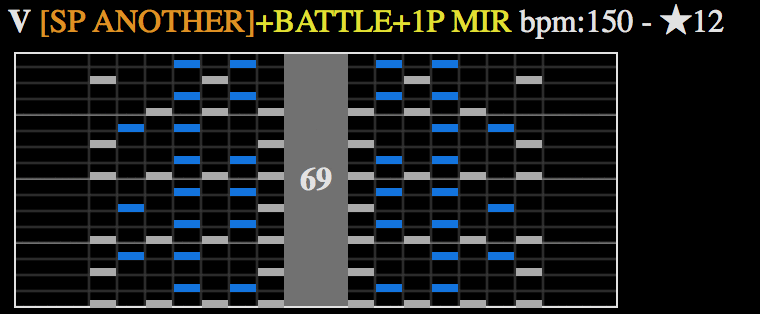
When you must stick them vise versa (上寄せ ueyose / push up), you should take into consideration the “hamburger theory”
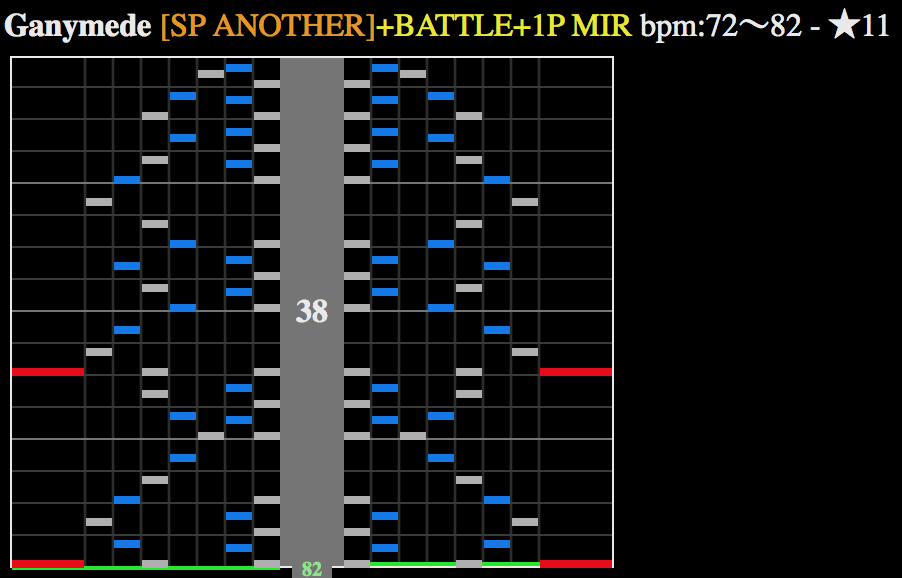
In the video around 8:35, he explains that Ganymede has mixed 8ths and 16ths notes at 82 BPM, but calls out that 8ths should be treated as 16ths, and 16ths as 32nds. (TL note: This doesn’t quite sound right - if you watch this video - 【DBM】Ganymede (ANOTHER)【AS + Hi-Speed×0.5 HARD CLEAR】 it was observed that he hits them in 8ths and then as 16ths.)
What is Hamburger theory?
When doing anmitsu, when you hit in the empty space between two consecutive notes, instead of counting it as a late judgement on the earlier note, it is instead counted as an early judgement on the later note.
(TL note: in the presentation he said “middle of two notes” but that isn’t necessarily true)
Hamburger theory is not applicable to BMS, so when you play BMS, you have to use a different anmitsu strategy.
Page 13 - Finger positions
With respect to right hand (2P) side. Normal text is the minimum requirement, text in bold is above-and-beyond, but still recommended that you learn as much as possible.
- Home positions (13457 / 12467)
- Thumb: 2, 3, 5
- Index: 1, 4, index joint 3
- Middle: 3, 5, 6
- Ring: 4
- Pinky: 5, 6
- Chop 5, Chop 6, Chop 7
- Special near-scratch positions (2096 style)
(TL note: near-scratch refers to situations where you get notes and scratches on the same side, requiring you to hit buttons and scratch using the same hand, like S123 or 567S. For 2096-style - I assume he also means wristing in addition to 1048 style on each hand.)
In the video around 9:07, he comments on middle-5 vs middle-6, saying that it’s good if you can do both, but just one of them is totally fine. He says pinky-5 is useful in real plays, and pinky-6 is useful for things like 12346 chord. Thumb-on-2 is uncommon but necessary for 24567 chord.
Chop 5, Chop 6, Chop 7
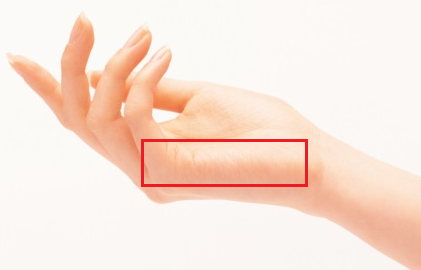
when you are using all five fingers to press buttons and don’t have any spare fingers, you can use side of palm (or any other area of your hand around this part). In the video around 11:10, he explains that for Chop 5, he uses the joints of his pinky.
Chop 6 was explained in the video, but the subtitle says it’s not useful anymore because more effective hand position had been researched.
Chop 5: hitting all keys except 3 -
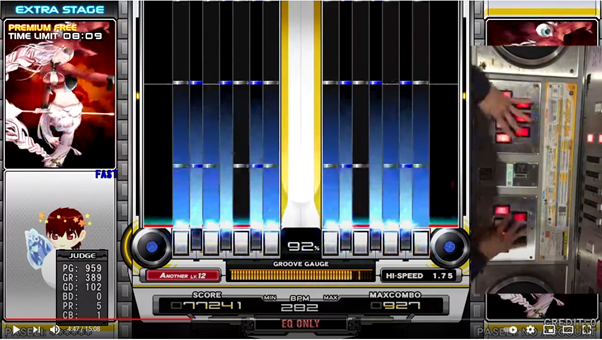
Chop 7: hitting all keys except 5 -
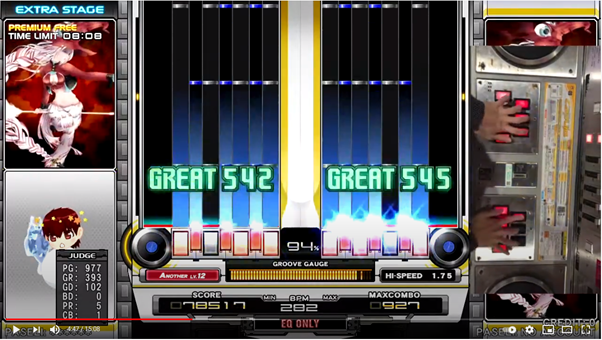
Page 14 - Non-Metronome Zagaku
- For difficult patterns, check one hand at a time while practising.
- If you use anmitsu, YOU MUST PRACTICE while looking at the original chart.
- Memorize the left/right side of chord sections, do a review with horizontal reading.
- When you get used to them, try them in order, paying attention to how fast you can move your fingers without missing notes.
- Recognize when your fingers aren’t hitting the notes correctly, or your brain can’t keep up. Repeatedly practice those sections.
The ultimate goal is to practice the above repeatedly until you can perform the finger movements without much thinking. Once you reach that goal, move onto Metronome Zagaku.
Page 15 - Metronome Zagaku
- Use apps or websites where you can check charts.
- If you have difficulties with finger movements, use a controller - real or fake - to get used to them.
- Start with the lowest BPM where you can reliably get a full combo, and keep trying them with increasing BPM.
It’s easy to fall into bad habits when practising with Metronome Zagaku; when this happens, go back to non-metronome Zagaku and rework your strategy.
Page 16 - Stealth Zagaku with Non-Metronome method
- Do Non-Metronome Zagaku without looking at the chart.
- Start with memorization of the first note. DO NOT try to memorize a bunch in one try; instead, memorize them stpe by step, at a steady pace. No matter how long it takes, ensure your muscles and brain are memorizing them.
- Whenever you have free time, do Zagaku.
- Whenever you can’t exactly recall things, check the chart again.
Page 17 - Stealth Zagaku with Metronome method
- Do Metronome Zagaku without looking at the chart.
- Use a controller - real or fake.
- Similar to Metronome Zagaku; it is easy to obtain bad habits along the way, so if you end up with that, go back to non-metronome method.
Page 18 - PDCA Cycle of Zagaku
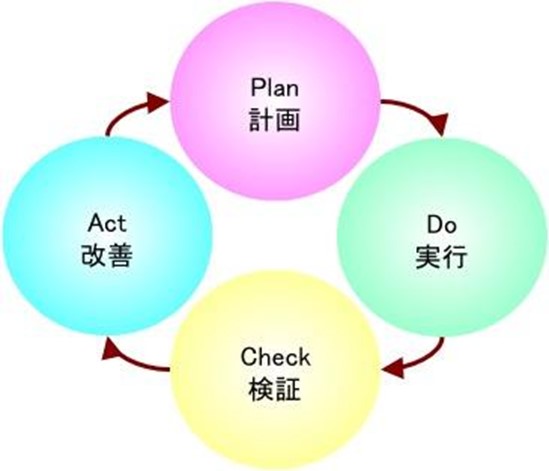
- Plan (Plan Zagaku)
- Do (Do Zagaku)
- Check (Play on an arcade cab)
- Act (Make corrections and revise your strategy)
Page 19-26 - Cautions for Stealth Zagaku
Playing on AC
- You should play AC for trial-and-error learning, even if you’re not fully prepared.
- When practising, imagine as if you’re playing on AC. It is really important that your environment matches the real AC experience as much as possible.
- The reason why you do Zagaku with the original chart – before you learn the anmitsu chart – is to ensure that you are able to make full use of your skills on AC.
- In Metronome Zagaku, if you are able to do it with 90% of the original BPM, you are ready for the real thing on AC.
- If you can do it at or above the original BPM, then you can definitely do it on AC.
Stay motivated
- Your mindset is the most important thing in Zagaku.
- He says think of Zagaku process like brushing your teeth, to a point where you are uncomfortable if you skip them.
- High-level charts might keep you motivated; but conversely, when you don’t have such high-level chart to play, you would lose all motivation.
- You will eventually encounter a “wall”. Understand your limits, keep the big-picture goal in mind, but also have smaller checkpoints along the way to keep you motivated.
Memorization tips 1
- In your head, you should synchronize the pattern with music.
- 80-90% of memorization is muscle memory. Repetition is needed.
- Always compare what you have memorized versus the actual chart, make small adjustments in your memory.
People always forget things over time, so you should study and review even the parts you have previously memorized. Memorize until you can recall measure number N from Song X.
Memorization tips 2 (memorizing zagaku)
Use an approach where you look at the overall shape of patterns.
- Difficult patterns are actually easier to memorize because they make a unique impression in your brain.
- Easier patterns may actually be harder to memorize. Use Stealth Zagaku, and whenever there parts you have trouble with, use it to divide up the measures to aide your memorization **
- Especially useful when there are a lot of repetitions.
** TL note: this was not well explained in the video… but it sounds like he is suggesting that you use the divide-and-conquer method to memorize easy parts of a song.
Memorization tips 3
- Eat good food, sleep well.
- You might have trouble recalling what you memorized in Zagaku after a night’s sleep. Doing Zagaku in the morning after waking up will refresh your memory.
- Don’t rush it. Sleep well and do stealth zagaku.
Page 27
So you don’t like memorizing charts?
- You already know the game rules, songs, hand positions, even names for patterns, and so on. Zagaku is just another thing you memorize to play this game well.
Page 28
So you don’t like doing Zagaku?
- You can do Zagaku easily. Just need a smartphone, or whatever method you can use to check the chart.
- Even if you don’t have controllers at home, you can imagine as if you are playing at AC.
- Even if you don’t have much time, try a little bit at a time. It’s really down to your motivation.
人生はモチベゲー
